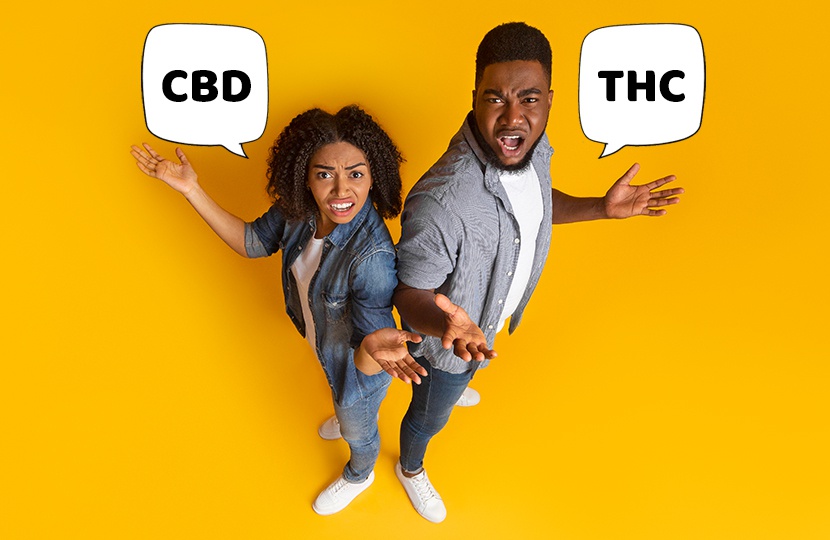Do you love the effects and benefits of cannabis? If so, you should learn more about how it works so you can truly appreciate what this plant can do for you.
While some may view terms like “sativa” and “indica” as a way to determine how a strain will affect you, the real heroes within the leaves are the cannabinoids that are found in marijuana and hemp plants. As cannabinoids interact with our brains’ neurotransmitters, we experience the positive effects that help us sleep easier, focus better, feel less physical pain, and more. Today, we’re going to take a deep dive into the two most notable cannabinoids: CBD and THC.
Both CBD and THC are identical in chemical composition, so why do they yield different results? It’s the arrangement of these chemicals that makes all the difference. Now let’s take a closer look at these two cannabinoids.
Tetrahydrocannabinol (THC)
Tetrahydrocannabinol, or THC, is a cannabinoid that is usually abundant in marijuana plants. When consumed, it interacts with the brain to increase dopamine production, which leads to euphoric sensations. If a product is rich in THC, you are more likely to notice the effects than you would from a strain with higher concentrations of CBD.
This cannabinoid has a number of therapeutic applications and can be used to help with sleep, decreased appetite, and pain, just to name a few. It can even be effective in lessening the severity of symptoms experienced from glaucoma, radiation therapy, fibromyalgia, and other conditions. Too much THC, however, can come with some undesired side effects, like dry mouth, forgetfulness, heightened anxiety, nausea, and more. When consuming cannabis products with high amounts of THC, it’s important to know how your body will react. If you’re new to the practice, you may want to start with strains that are lower in THC.
Cannabidiol (CBD)
Cannabidiol, commonly known as CBD, is purer when extracted from hemp plants, though it is also abundantly present in marijuana plants. This cannabinoid has no mind-altering effects and is thus regarded as the more medicinal compound.
There is a wide range of healing qualities associated with CBD, which may be beneficial for anything from common conditions like inflammation, stress, and pain to more severe illnesses such as multiple sclerosis, Crohn’s disease, and even cancer.
CBD offers little to no side effects regardless of the amount taken and can also help limit the psychoactive response that THC is known to produce. Because of this, it’s wise for newer cannabis consumers to choose a strain with a good balance of both CBD and THC. Items produced from marijuana may contain higher quantities of THC than you’d expect, so if you want CBD without any of the mind-altering effects, you’d be better off purchasing hemp-based products.
Finding What’s Right for You
Cannabis does not represent a one-size-fits-all solution. There’s a diverse offering of strains available to target specific needs, and each one has a unique balance of CBD and THC to achieve different desired effects. Naturally, products that lean heavier on CBD will help you relax, while those high in THC will lift you up.
The scientific community is beginning to find that the benefits are even greater when both cannabinoids work together, though we will be covering this in more detail in the future.
The next time you’re shopping, make sure you take a good look at the label, and pay extra attention to the CBD to THC ratio; this can give you an idea of the kind of product you’ll be purchasing.
For more information, visit Bloc Dispensary
Resources:
https://firstcrop.com/the-difference-between-cbd-and-thc/
https://www.leafly.com/news/cbd/cbd-vs-thc
https://www.ohiomarijuanacard.com/thc-vs-cbd
https://www.verywellmind.com/cbd-vs-thc-differences-benefits-side-effects-legality-5071416

